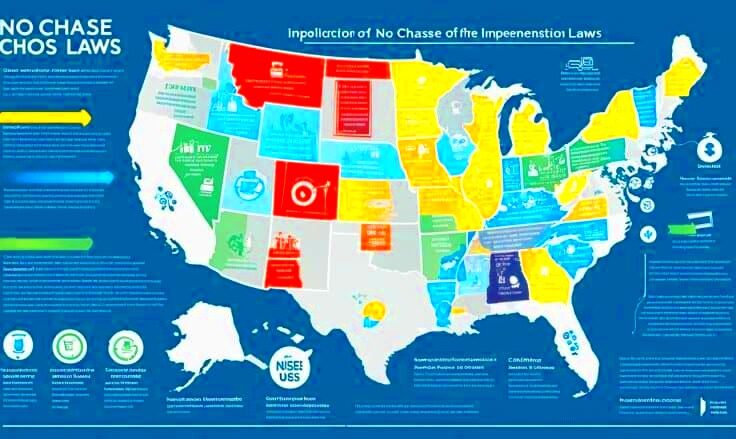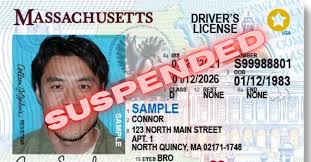Maryland’s No Chase Law: Legal Implications for Law Enforcement
The No Chase Law in Maryland is a significant piece of legislation aimed at changing how law enforcement officers handle pursuits. This law was enacted to enhance public safety by minimizing high-speed chases that can lead to dangerous situations for officers, suspects, and innocent bystanders. Understanding this law is crucial for both citizens and law enforcement to navigate the implications effectively.
Overview of the Law and Its Purpose

The No Chase Law, formally known as the Police Pursuit Policy, was introduced in Maryland to regulate how police officers engage in high-speed pursuits. The primary purpose of this law is to:
- Reduce the risk of accidents and injuries during police chases.
- Promote safer law enforcement practices.
- Encourage alternative methods for apprehending suspects.
Prior to this law, police officers often pursued suspects at high speeds, which could lead to collisions, injuries, and even fatalities. This legislation acknowledges the need for balancing law enforcement objectives with community safety. By limiting the circumstances under which officers can engage in pursuits, the law aims to protect the public while still allowing police to perform their duties effectively.
Key Provisions of the No Chase Law

The No Chase Law includes several key provisions designed to guide police conduct during pursuits:
- Criteria for Pursuit: Officers may only engage in pursuits for serious offenses, such as violent crimes or felonies. Minor infractions typically do not warrant a chase.
- Assessment of Risk: Before initiating a chase, officers must assess the potential risks to public safety and weigh them against the need to apprehend the suspect.
- Communication Protocols: Officers are required to inform dispatch and other units of their intention to pursue, ensuring that backup and additional resources are available if necessary.
- Mandatory Reporting: All pursuits must be documented, including the circumstances leading to the chase and any incidents that occurred during the pursuit.
These provisions aim to create a framework for law enforcement that prioritizes safety while still allowing officers to perform their essential duties. By adhering to these guidelines, police can better manage high-speed chases and their potential consequences.
Impact on Law Enforcement Practices

The Maryland No Chase Law has significantly altered how law enforcement agencies operate in the state. With the new regulations in place, officers must rethink their strategies for apprehending suspects. Here are some notable impacts:
- Increased Focus on De-escalation: Officers are now encouraged to prioritize de-escalation techniques rather than engage in high-speed chases. This can involve using communication skills to negotiate or gather more information about a suspect’s whereabouts.
- Use of Technology: Agencies are investing in technology, such as surveillance cameras and GPS tracking, to monitor suspects without pursuing them at high speeds. This helps maintain public safety while still allowing law enforcement to gather crucial information.
- Training and Policies: Departments have revised their training programs to include the new policies and ensure that all officers understand the legal implications of the No Chase Law. This includes emphasizing the importance of assessing risks before initiating any chase.
Overall, the law has fostered a culture where officers must exercise greater judgment and rely on alternative methods to achieve their goals, ultimately reshaping law enforcement practices across Maryland.
Legal Implications for Police Officers
Maryland’s No Chase Law brings several legal implications for police officers, which they must navigate carefully. Here are some key points to consider:
- Liability for Injuries: If an officer initiates a chase that violates the No Chase Law and an accident occurs, they may face legal liability for injuries or damages. This puts pressure on officers to comply with the law strictly.
- Disciplinary Actions: Departments may impose disciplinary measures on officers who fail to follow the established protocols, which can range from reprimands to suspension or even termination for egregious violations.
- Public Perception: The law also affects how the public views police officers. Engaging in unnecessary pursuits can lead to a loss of community trust and support, impacting overall policing effectiveness.
With these legal considerations, officers must be well-informed about the law and its implications, ensuring that their actions align with both legal requirements and departmental policies.
Effects on Public Safety and Crime Rates
The implementation of the No Chase Law has sparked discussions about its effects on public safety and crime rates in Maryland. Here are some observations:
- Reduced Accidents: One of the primary goals of the law is to decrease the number of accidents related to police chases. Early reports indicate a decline in high-speed chase incidents, leading to fewer injuries and fatalities among both officers and civilians.
- Impact on Crime Rates: Critics of the law argue that limiting chases may embolden criminals. However, data shows that serious crime rates have not significantly increased. Police are adapting by using other strategies, such as surveillance, to address crime effectively.
- Community Trust: By prioritizing safety over high-speed pursuits, police can foster better relationships with the communities they serve. When citizens feel safer, they are more likely to cooperate with law enforcement efforts.
In summary, while the No Chase Law has introduced challenges for law enforcement, it has also provided opportunities for safer policing practices. Balancing public safety with effective crime prevention remains a crucial focus moving forward.
Challenges and Criticisms of the Law
While the Maryland No Chase Law aims to enhance public safety, it has faced various challenges and criticisms from law enforcement and community members alike. Here are some of the main concerns:
- Increased Criminal Activity: Critics argue that limiting police chases may encourage criminals to evade law enforcement. If suspects know they can escape without the risk of a chase, it could lead to an uptick in reckless behavior and more serious crimes.
- Complexity of Implementation: The law’s provisions can be complex for officers to interpret and apply. Each situation is unique, and officers may struggle to determine when a chase is justified under the law.
- Public Awareness: Many citizens are unaware of the specifics of the No Chase Law, leading to misunderstandings about police actions during pursuits. This lack of awareness can breed frustration and mistrust within the community.
- Resource Limitations: Some law enforcement agencies may lack the necessary resources or training to implement alternative strategies effectively. This can hinder their ability to adapt to the new requirements.
These challenges highlight the ongoing debates surrounding the law and suggest a need for continuous evaluation and improvement in its application.
Frequently Asked Questions about the No Chase Law
The No Chase Law raises several questions among the public and law enforcement. Here are some common inquiries:
- What constitutes a serious offense for pursuit? Generally, serious offenses include violent crimes or felonies. Minor traffic violations typically do not warrant a police chase.
- How do officers assess the risks of a chase? Officers must consider factors such as traffic conditions, the location of the pursuit, and the potential threat to public safety before initiating a chase.
- What are the consequences for officers who violate the law? Officers who engage in unauthorized pursuits may face disciplinary actions, including reprimands or termination, depending on the severity of the violation.
- Are there exceptions to the No Chase Law? Yes, certain situations may warrant exceptions, but these must be clearly justified and documented according to departmental policies.
These questions reflect the community’s desire for clarity regarding the law and its implications for both citizens and law enforcement.
Conclusion on the No Chase Law and Its Future
In conclusion, Maryland’s No Chase Law represents a significant shift in law enforcement practices aimed at prioritizing public safety. While it offers many benefits, such as reducing accidents and fostering community trust, the law also faces challenges and criticisms that need addressing.
The future of the No Chase Law will likely depend on ongoing evaluations of its impact on crime rates and public safety. Law enforcement agencies will need to adapt and develop new strategies to effectively manage pursuits while maintaining community safety. Here are some considerations for the future:
- Continuous Training: Regular training sessions for officers can help ensure they are well-versed in the law and its provisions, improving their decision-making skills during critical situations.
- Community Engagement: Building strong relationships with the community can foster trust and understanding, making it easier to implement the law successfully.
- Policy Reevaluation: Policymakers should be open to reevaluating the law based on its outcomes and feedback from law enforcement and community members.
By addressing these aspects, Maryland can work towards a balanced approach that safeguards public safety while allowing law enforcement to perform their vital duties effectively.


